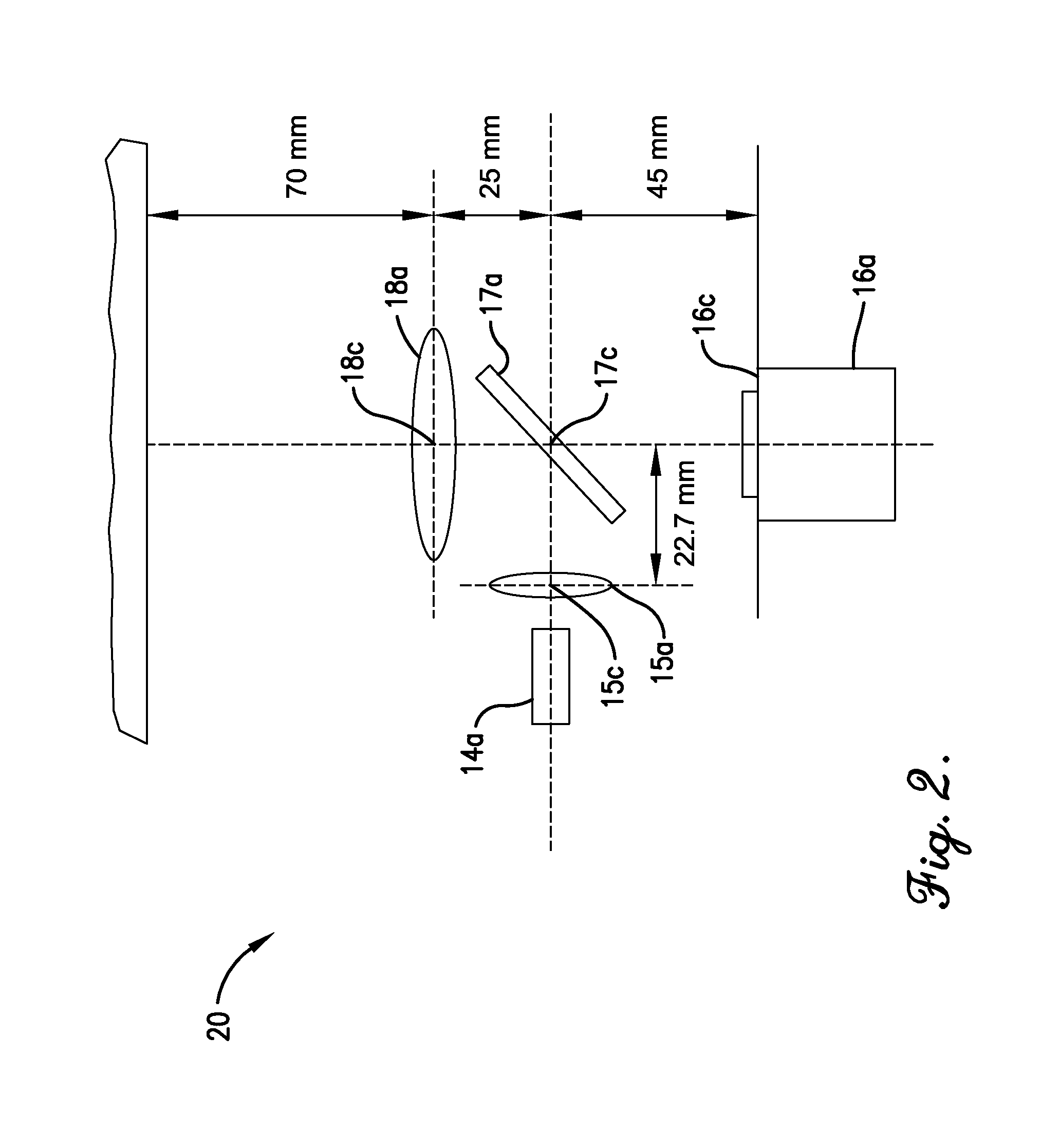Portable high-resolution non-contact modular sensor for surface strain measurement
a non-contact, sensor technology, applied in the field of modules, can solve the problems of time-consuming and labor-intensiv
- Summary
- Abstract
- Description
- Claims
- Application Information
AI Technical Summary
Benefits of technology
Problems solved by technology
Method used
Image
Examples
example 1
Surface Strain Profile of a Pre-Stressed Concrete Member
[0068]In this Example, a surface strain profile of a pre-stressed concrete beam immediately after cutting the tensioned strands was generated. A 9.5 foot pre-stressed concrete beam having a rectangular cross section was fabricated around tensioned steel strands. In order to facilitate the strain sensor measurements, three small ¼-inch diameter inserts were cast into the pre-tensioned concrete beam to allow an aluminum rail to sit on the top of the beam surface. The optical strain sensor fabricated in accordance with the present invention was then installed on the rail and was able to traverse freely thereon. Surface strain measurements were obtained at various points along the concrete beam and processed as discussed above. The results are shown graphically in FIG. 9, which illustrate that the optical strain sensor can perform surface strain measurements on pre-stressed concrete beams immediately after de-tensioning. Further, t...
example 2
Transfer Length Measurement of Pre-Stress Railroad Tie
[0069]In this Example, the feasibility of the in-plant transfer length measurements using the optical strain sensor was determined Transfer length measurements were obtained at the CXT concrete cross-tie production plant in Grand Island, Nebr.
[0070]In order to facilitate the strain sensor measurements, three small ¼-inch-diameter inserts were cast into each of the cross-ties immediately after pouring the concrete mix. The inserts allow an aluminum rail to sit on the top of the member surface. The sensor was installed on the rail and was able to traverse freely thereon.
[0071]Before de-tensioning the cross-tie, the optical strain sensor was manually traversed along the rail as sensor readings were taken every 0.5 inch for the first 10 points counting from the end of the tie, and every 1 inch thereafter along the beam. 70 data points were obtained for each tie, with 35 data points for either side.
[0072]After the cross-tie was de-ten...
example 3
Automated Transfer Length Measurements on Concrete Railroad Ties
[0075]In this Example, an automated strain sensor assembly was fabricated as described above with respect to FIG. 8, and utilized to measure transfer lengths of concrete prisms. The specifications of the automated sensor assembly used in this Example includes 24 inch scan length measurement on each end of the concrete cross-tie, 1 minute cycle time for approximately 60 distributed strain measurements per scan, and 0.010 in. repeatable sensor positioning accuracy.
[0076]A pre-tensioned concrete prism was poured as the specimen, and after setting, the automated sensor system was mounted on top of the concrete prism surface. The sensor traveled along the concrete prism and took 60 surface strain data points in 1 minute for one end of the concrete prism. By doing this before and after the de-tensioning, the surface strain profile was measured and the transfer length was subsequently reported.
[0077]To evaluate the repeatabili...
PUM
 Login to View More
Login to View More Abstract
Description
Claims
Application Information
 Login to View More
Login to View More - R&D
- Intellectual Property
- Life Sciences
- Materials
- Tech Scout
- Unparalleled Data Quality
- Higher Quality Content
- 60% Fewer Hallucinations
Browse by: Latest US Patents, China's latest patents, Technical Efficacy Thesaurus, Application Domain, Technology Topic, Popular Technical Reports.
© 2025 PatSnap. All rights reserved.Legal|Privacy policy|Modern Slavery Act Transparency Statement|Sitemap|About US| Contact US: help@patsnap.com



